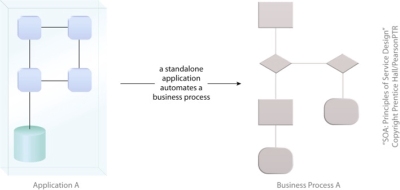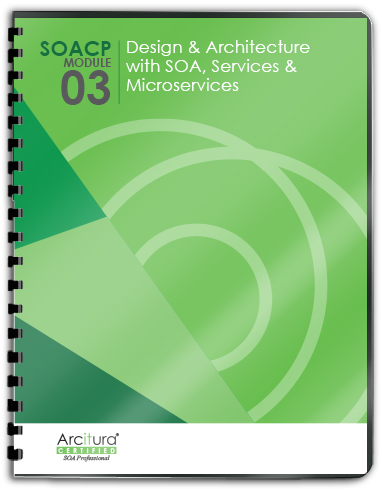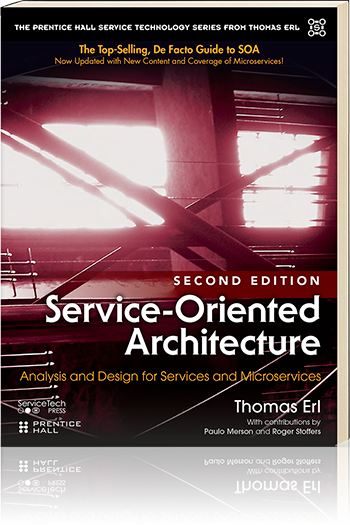SOA Patterns > Basics > Service-Orientation Principles > Effects of Service-Orientation on the Enterprise > Service-Orientation and the Concept of “Application”
Service-Orientation and the Concept of “Application”
Service-orientation places an unprecedented emphasis on reuse. By establishing a service inventory with a high percentage of reusable and agnostic services, we are now positioning those services as the primary (or only) means by which the solution logic they represent can and should be accessed.
As a result, we make a very deliberate move away from the silos in which applications previously existed. Because we want to share reusable logic whenever possible, we automate existing, new, and augmented business processes through service composition. This results in a shift where more and more business requirements are fulfilled not by building or extending applications, but by simply composing existing services into new composition configurations.

Figure 1 – The traditional application, delivered to automate specific business process logic.
When compositions become more common, the traditional concept of an application or a system or a solution actually begins to fade, along with the silos that contain them. Applications no longer consist of self-contained bodies of programming logic responsible automating a specific set of tasks. What was an application is now just another service composition. And, it’s a composition made up of services that very likely participate in other compositions.

Figure 2 – The service composition, intended to fulfill the role of the traditional application by leveraging agnostic and non-agnostic services from a service inventory. This essentially establishes a “composite application.”
An application in this environment loses its individuality. One could argue that a service-oriented application actually does not exist because it is, in fact, just one of many service compositions. However, upon closer reflection, we can see that some of the services are actually not business process-agnostic. The task service, for example, intentionally represents logic that is dedicated to the automation of just one business task and is therefore not necessarily reusable.
What this indicates is that non-agnostic services can still be associated with the notion of an application. However, within service-oriented computing, the meaning of this term can change to reflect the fact that a potentially large portion of the application logic is no longer exclusive to the application.

